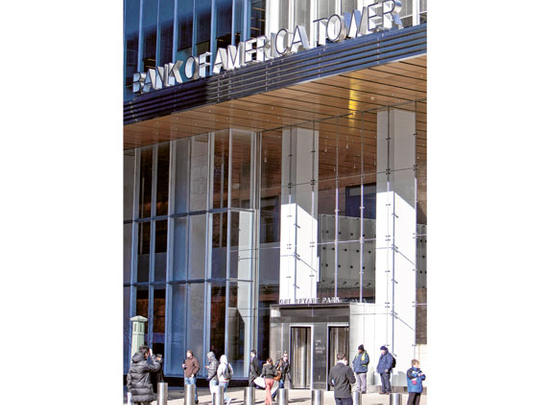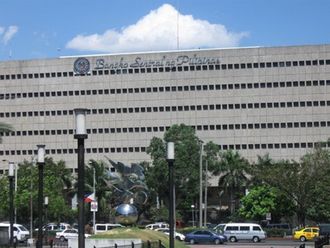
New York: Bank of America, the lender burdened by its Countrywide Financial Corp. takeover, would consider putting the unit into bankruptcy if litigation losses threaten to cripple the parent, said four people with knowledge of the firm's strategy.
The option of seeking court protection exists because the Charlotte, North Carolina-based bank maintained a separate legal identity for the subprime lender after the 2008 acquisition, said the people, who declined to be identified because the plans are private. A filing isn't imminent and executives recognise the danger that it could backfire by casting doubt on the financial strength of the largest US bank, the people said.
The threat of a Countrywide bankruptcy is a "nuclear" option that Chief Executive Officer Brian T. Moynihan could use as leverage against plaintiffs seeking refunds on bad mortgages, said analyst Mike Mayo of Credit Agricole Securities USA. Moynihan has booked at least $30 billion (Dh110 billion) of costs for faulty home loans, most sold by Countrywide during the housing boom, and analysts estimate the total could double in coming years.
"If the losses become so great, how can Bank of America at least not discuss internally the relative tradeoff of a Countrywide bankruptcy?" Mayo, who has an "underperform" rating on the bank, said in an interview. "And if you pull out the bazooka, you'd better be prepared to use it."
Countrywide practices
Just before former CEO Kenneth D. Lewis bought Calabasas, California-based Countrywide, the firm was the biggest mortgage lender in the US with 17 per cent of the market and $408 billion of loans originated in 2007, according to industry newsletter Inside Mortgage Finance. Regulators later found its growth was fuelled by lax lending standards, with loans marred by false or missing data about borrowers and properties.
Bankruptcy for Countrywide has gained credence with some investors and analysts after Bank of America lost almost half its market value this year. The shares have been whipsawed as the caseload of lawsuits by mortgage bond investors expanded, along with doubts about whether the bank has enough reserves to handle claims. The lender fell 1.4 per cent to $7.23 in New York Stock Exchange composite trading on Friday.
A Countrywide bankruptcy could halt legal proceedings and consolidate litigation into one court that would split up the subsidiary's remaining assets for creditors, said Jay Westbrook, a law professor at the University of Texas at Austin. In effect, this would trade one type of litigation for another, one of the people said. The decision would turn on whether the potential savings of a filing outweigh the risks involved in disavowing some of the firm's obligations, the person said.
What could go wrong
Pitfalls include the possibility that a bankruptcy filing would cast doubt on the entire company's willingness to support its other subsidiaries and damage Bank of America's standing in the credit markets or with rating firms, hurting its ability to borrow, according to analysts.
"It's not some sort of magic elixir that makes it all just go away," Westbrook said. "I suspect that's one reason they haven't done it yet."
Moynihan, 51, has been asked publicly about a potential Countrywide bankruptcy at least three times in the past year, most recently this week at a conference in New York. The bank's mortgage division is his only unprofitable business, reporting a $25.3 billion pretax loss in the first half of this year.
Larry DiRita, a Bank of America spokesman, said he couldn't comment on whether the company planned to file a Countrywide bankruptcy. The bank "took great pains to preserve the separate identity of Countrywide," DiRita said.











